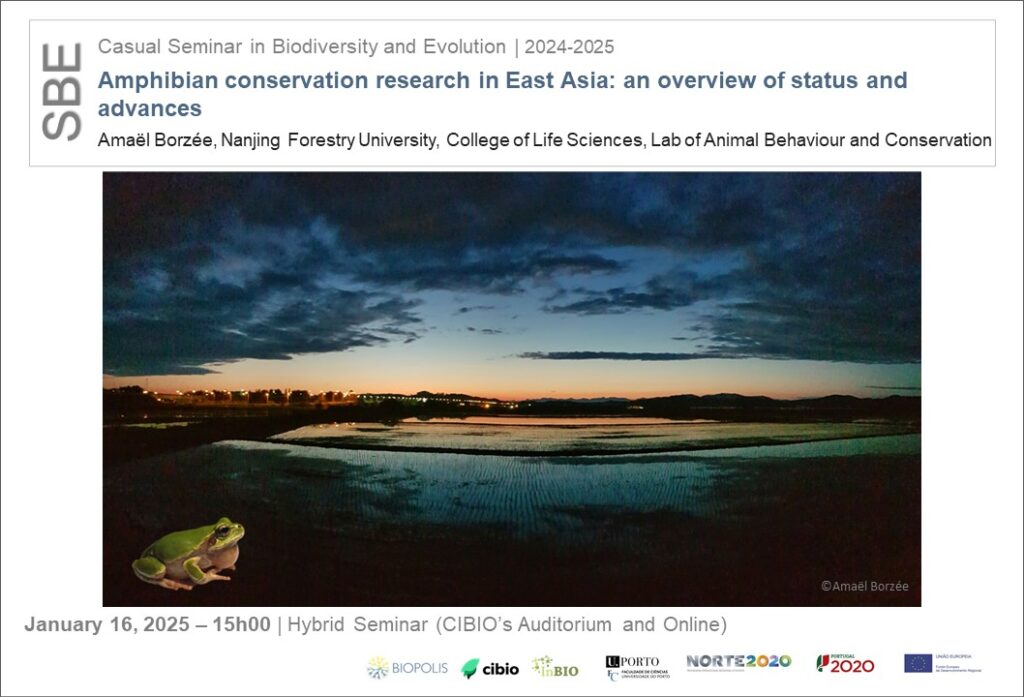
Amphibian conservation research in East Asia: an overview of status and advances
Amaël Borzée, Nanjing Forestry University, College of Life Sciences, Lab of Animal Behaviour and Conservation
January 16, 2025 | 15h00 | Hybrid Seminar (Zoom Link: https://videoconf-colibri.zoom.us/j/92855066980)
The surge in research focused on conservation, along with its novelty factor, has made it an appealing subject of investigation from multiple perspectives. This growing interest has fostered an interdisciplinary approach that has yielded significant innovations, ultimately bolstering efforts aimed at conserving the Earth’s biodiversity. However, a critical challenge is the need to effectively synthesize and organize research findings in a way that positively influences conservation initiatives. Of particular concern is the decline of amphibian populations, with over 40% of species worldwide now listed as threatened. When analysing the proportion of threatened amphibians within each biome, East Asia stands out as a hotspot of amphibian conservation needs. This pronounced trend can be attributed, in large part, to the transformation of natural wetlands into agricultural wetlands, which has negatively impacted species diversity and abundance. The approach presented here integrates science-based conservation strategies, facilitating a comprehensive understanding of the threats faced by amphibians in East Asia. This approach relies on a multi-faceted process that encompasses key fields in conservation, including behavioural ecology, genomics, mitigation plans, policy recommendations, conservation applications, and monitoring protocols. This approach strives to provide robust support for the conservation of East Asian amphibian biodiversity while concurrently fostering a sustainable coexistence between humans and other species inhabiting our planet.
More information here